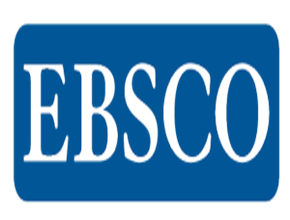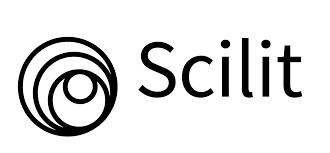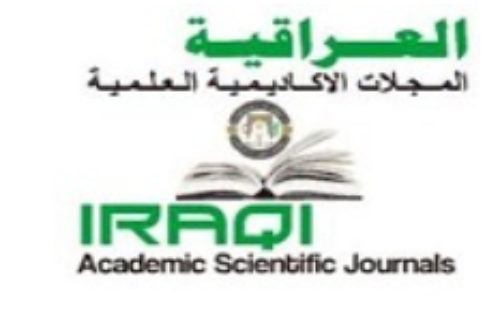GC-MS Assay to Ethanolic and Aquatic Extract of Mentha spicata L. leaves and Detection Effect of Extract as Antibacterial
DOI:
https://doi.org/10.32792/utq/utjsci/v12i1.1299Keywords:
GC-MS, Antibacterial, Mentha spicataAbstract
The analysis and identification of the chemical composition of the aqueous and ethanolic Mentha spicata L. extract by means of gaz chromatography and mass spectroscopy was realized in this paper. In addition, their antimicrobial activity was screened. From the leaf M. spicata, were separated, and determined their composition. The main components of ethanolic extract were Hexadecanoic acid, methyl ester (12.46%), Pentadecanoic acid (15.94%), Octadecanoic acid (6.11%), Methyl stearate (1.84%) and Phytol (28.06%). In Aquatic extract, the main components were Hexadecanoic acid, methyl ester (32.41%), Pentadecanoic acid (26.33%), Methyl stearate (12.33%) and Octadecanoic acid (7.58%). Furthermore, screening of the M. spicata extract for their antimicrobial activities reveals the highest activity of M. spicata alcoholic extract against Staphylococcus aureus, with an inhibition zone 15.8 ± 0.28 in 100% concentration and the highest activity of M. spicata aqueous extract against Pseudomonas aeruginosa, with an inhibition zone 14.0 ± 1.00 in 25% concentration. However, more research on the factors influencing the biosynthesis and bioactivity of chemical composition is needed as aqueous and ethanolic extract have gained important applications in food and pharmaceuticals industry.
Received:2024-08-27
Revised: 2024-09-23
Accepted: 2024-10-14
References
[1] R. A. AlAskary and H. R. Malih, “Effectiveness study of Artemisia herba-alba and Borage officinalis leaf extract against bacteria Staphylococcus aureus,” Thi-Qar Journal of Science, Vol. 8, no. 1. Pp. 113-117, 2022.
[2] F. Amarti et al., “Composition chimique, activité antimicrobiennne et antioxydante de l’huile essentielle de Thymus zygis du Maroc,” Phytothérapie, vol. 9, no. 3, pp. 149–157, Apr. 2011,
[3] “Canadian Medicinal Crops,” Google Books.
[4] H. Archana and V. G. Bose, “Evaluation of phytoconstituents from selected medicinal plants and its synergistic antimicrobial activity,” Chemosphere, Vol. 8, no. 1. Pp. 113-117, 2022.
[5] S. Wang, X.-Q. Liu, O. Kang, and D. Kwon, “Combination of Sanguisorbigenin and Conventional Antibiotic Therapy for Methicillin-Resistant Staphylococcus aureus: Inhibition of Biofilm Formation and Alteration of Cell Membrane Permeability,” International Journal of Molecular Science, Vol. 23, no. 8. Pp. 4220-4232, 2022.
[6] J. H. C. Nogueira, E. Gonçalez, S. R. Galleti, R. Facanali, M. O. M. Marques, and J. D. Felício, “Ageratum conyzoides essential oil as aflatoxin suppressor of Aspergillus flavus,” International Journal of Food Microbiology, vol. 137, no. 1, pp. 55–60, Jan. 2010.
[7] L. A. BenSaad, K. H. Kim, C. C. Quah, W. R. Kim, and M. Shahimi, “Anti-inflammatory potential of ellagic acid, gallic acid and punicalagin A&B isolated from Punica granatum,” BMC Complementary and Alternative Medicine, vol. 17, no. 1, Jan. 2017.
[8] E. Fitsiou et al., “Phytochemical Profile and Evaluation of the Biological Activities of Essential Oils Derived from the Greek Aromatic Plant Species Ocimum basilicum, Mentha spicata, Pimpinella anisum and Fortunella margarita,” Molecules, vol. 21, no. 8, p. 1069, Aug. 2016.
[9] B. Jedi-Behnia, S. Maleki, and E. Mousavi, “The antidepressant-like effect of Mentha spicata essential oil in animal models of depression in male mice,” Journal of Advanced Biomedical Sciences, vol. 7, no. 1, p. 141-49, Aug. 2017.
[10] M. Brahmi et al., “Evaluation of the therapeutic effects of peppermint essential oil on the liver level in developing Wistar rats exposed to lead and manganese,” Carpathian Journal of Food Science & Technology vol. 11, no. 2, p. 49-55, Apr. 2019.
[11] Barchan, M. Bakkali, A. Arakrak, and A. Laglaoui, “Effet antibactérien et anti-biofilm de trois espèces de Mentha: Mentha spicata, Mentha pulegium et Mentha piperita,” Phytothérapie, vol. 14, no. 2, pp. 88–96, Jun. 2015.
[12] S. Kehili, M. Boukhatem, A. Belkadi, F. Boulaghmen, M. Ferhat, and W. Setzer, “Spearmint (Mentha spicata L.) essential oil from tipaza (Algeria): in vivo anti-inflammatory and analgesic activities in experimental animal models, Acta Pharmaceutica Hungarica, vol. 1, no. 10, pp. 15–26, Jun. 2020.
[13] Chrysargyris, P. Xylia, G. Botsaris, and N. Tzortzakis, “Antioxidant and antibacterial activities, mineral and essential oil composition of spearmint (Mentha spicata L.) affected by the potassium levels,” Industrial Crops and Products, vol. 1, no. 103, pp. 202–212, Jun. 2017.
[14] F. Anwar, A. Abbas, T. Mehmood, A. Gilani, and N. Rehman, “Mentha: A genus rich in vital nutra‐pharmaceuticals—A review,” Phytotherapy Research, vol. 33, no. 10, pp. 2548–2570, Jul. 2019.
[15] M. Snoussi, E. Noumi, N. Trabelsi, G. Flamini, A. Papetti, and V. De Feo, “Mentha spicata Essential Oil: Chemical Composition, Antioxidant and Antibacterial Activities against Planktonic and Biofilm Cultures of Vibrio spp. Strains,” Molecules, vol. 20, no. 8, pp. 14402–14424, Aug. 2015.
[16] T. Mata, C. Proença, A. R. Ferreira, M. L. M. Serralheiro, J. M. F. Nogueira, and M. E. M. Araújo, “Antioxidant and ant acetylcholinesterase activities of five plants used as Portuguese food spices,” Food Chemistry, vol. 103, no. 3, pp. 778–786, Jan. 2007.
[17] N. N. Hussein and H. R. Malih, “Inhibitory Effect of Tamarix aucheriana aqueous and Alcoholic Extracts against Klebsiella Pneumonia Which Isolated from Patients in Nasiriya City, Southern Iraq,” Annals of the Romanian Society for Cell Biology, vol. 25, no. 6, pp. 12220–5, Jun. 18, 2021.
[18] Y. Liu et al., “Response surface optimization of ultrasound-assisted enzymatic extraction polysaccharides from Lycium barbarum,” Carbohydrate Polymers, vol. 110, pp. 278–284, Sep. 2014.
[19] B. Pradhan, S. Patra, S. R. Dash, R. Nayak, C. Behera, and M. Jena, “Evaluation of the anti-bacterial activity of methanolic extract of Chlorella vulgaris Beyerinck [Beijerinck] with special reference to antioxidant modulation,” Future Journal of Pharmaceutical Sciences, vol. 7, no. 1, Jan. 2021, doi: 10.1186/s43094-020-00172-5.
[20] J. B. Harborne, Phytochemical Methods Book. 1984. doi: 10.1007/978-94-009-5570-7.
[21] E. Mezal, Z. K. Hanan, and M.Saleh, "Determination of antibiotic resistance of Salmonella enterica isolated from children with diarrhea in Thi Qar Governorate during 2015, thesis"” 2016.
[22] “WHO model list of essential medicines, 20th list (March 2017, amended August 2017),” 2017. https://iris.who.int/handle/10665/273826
[23] C. Jain, S. Khatana, and R,Vijayvergia, “Bioactivity of secondary metabolites of various plants: A review,” Int. J. Pharm. Sci. Res., vol. 10, no. 2, pp. 494–504, 2019.
[24] T. Tyagi and M. Agarwal, “Phytochemical screening and GC-MS analysis of bioactive constituents in the ethanolic extract of Pistia stratiotes L. and Eichhornia crassipes (Mart.) solms,” www.phytojournal.com, vol. 6, no. 1, pp. 195–206, vol. 10, no. 1, pp. 17–26, 2017.
[25] T. Mujtaba, S. Hassan, A. Hassan, M. Wajdi, A. Hafeez, K. Shereen, K. Hussain, A. Ahmed, H. Furqan, N. Tabassum, and M. A. Akbar, "Electron ionization gas chromatography-mass spectrometry (EI-GC-MS) analysis of extracted oil from Tribulus terrestris seeds," Pakistan Journal of Pharmaceutical Sciences, vol. 33, pp. 2633–2641, 2020.
[26] P. Das et al., “Antibacterial activity and molecular docking study of Coptis teeta,” Pakistan Journal of Pharmaceutical Sciences, Herba Polonica, vol. 69, No. 2, pp. 1-8, 30 May, 2023.
[27] T. E. Hagr and I. Adam, “Phytochemical Analysis, Antibacterial and antioxidant Activities of Essential Oil from Hibiscus sabdariffa (L) Seeds, (Sudanese Karkadi),” Pakistan Journal of Pharmaceutical Sciences, Herba Polonica, vol. 3, No. 3, pp. 194-201, 1 Jul, 2020.
Downloads
Published
License
Copyright (c) 2025 University of Thi-Qar Journal of Science

This work is licensed under a Creative Commons Attribution 4.0 International License.












